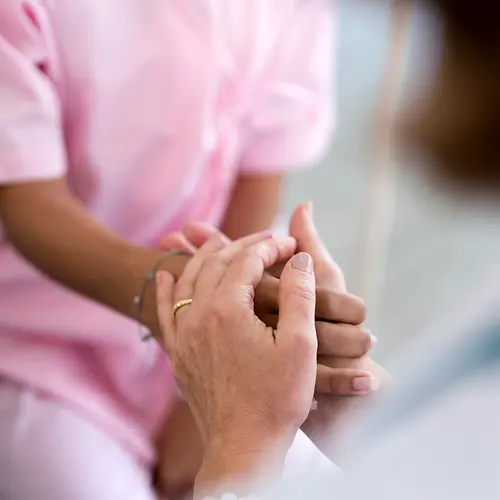When you feel a lump in your breast, it's understandable to be concerned. But don't jump to conclusions.
Instead, take action. Call your doctor to find out what it is.
Also, make sure you haven't fallen for any of these 8 myths about breast lumps.
Myth 1: A Breast Lump Is Probably Cancer
Most breast lumps women feel -- 8 out of 10 -- aren't cancer. It's more common for them to be a cyst (a sac) or a fibroadenoma (an abnormal growth that's not cancer). Some lumps come and go during a woman's menstrual cycle.
You can't tell what it is by how it feels.
"It's always important to know your own body and detect a change which may need to be evaluated," says Beth Overmoyer, director of the Inflammatory Breast Cancer Program at the Dana-Farber Cancer Institute in Boston. "If it is cancer, then you may have saved your life."
Myth 2: If You Have a Lump but Your Mammogram Is Normal, You're Done
You may need more tests, such as an MRI, ultrasound, or follow-up mammogram, to take another look at the lump.
You may also need to get a biopsy, which is when a doctor takes a small sample of the lump to test it.
Your doctor may also recommend getting checked more often.
Myth 3: Cancerous Breast Lumps Are Always Painless
Not necessarily. Although breast cancers aren't always painful, having breast pain doesn't rule out cancer.
Inflammatory breast cancer - which has early symptoms such as redness, swelling, tenderness, and warmth in the breast -- can be painful when there is a lump, Overmoyer says.
Myth 4: If You Find a Lump While Breastfeeding, It Can't Be Cancer
Though breastfeeding does make you less likely to get breast cancer, it can still happen. If you notice a lump while you're breastfeeding, don't ignore it.
You may get an ultrasound to check it out, Overmoyer says.
Myth 5: If You're Young, a Breast Lump Can't Be Cancer
Not so. At any age, you should get breast lumps checked out by a doctor.
Even though most women who get breast cancer are past menopause or older than 50, a lump can be cancer, even in a younger woman.
Myth 6: A Small Lump Is Less Likely to Be Cancer Than a Large Lump
Breast lumps come in all sizes, and size doesn't affect the odds that it's cancer, says Melissa Scheer, MD, a breast-imaging specialist at Manhattan Diagnostic Radiology in New York.
Whenever you feel a lump that's new or unusual, even if it's tiny, see your doctor. Even small lumps can be aggressive cancers.
Myth 7: If You Feel a Lump Soon After a Mammogram, It's OK to Wait Another Year
Call your doctor if you notice a lump soon after your latest mammogram, even if the results were normal. Mammograms can miss some cancers, especially if you have dense breast tissue or if the lump is in an awkward location (such as near your armpit).
"The doctor should only suggest a 'watch-and-wait' approach after the appropriate breast imaging has been normal and nothing suspicious can be felt," Scheer says.
Myth 8: A Lump Is Probably Harmless If There's No Breast Cancer in Your Family
Many women think they're not at risk for breast cancer if no one in their family has had it. But that's not true.
Less than 15% of women with breast cancer have a relative who's had the disease, according to the American Cancer Society.
Get all lumps checked by a doctor, whether or not breast cancer runs in your family.

